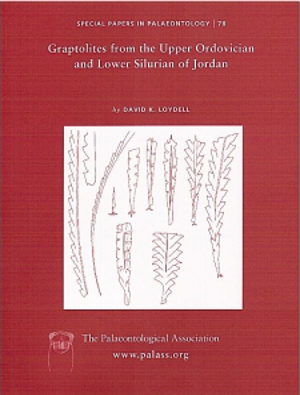Reg. Charity No. 1168330

Forty-two graptoloid graptolite species are described from the upper Hirnantian persculptus Biozone, lower Rhuddanian ascensus-acuminatus and vesiculosus biozones and Aeronian of Jordan. Nine species are left in open nomenclature; three are new: Neodiplograptus lueningi, Ne.? opimus and Normalograptus bifurcatus. Characters of use in defining uppermost Ordovician–lower Silurian biserial graptoloid taxa are discussed. In addition to dorso-ventral width and thecal spacing, the most important characters are defined by the nature of the growth of th11 and th12, which dictates the appearance of the proximal end. Other important characters include virgellar modifications and thecal morphology, particularly the inclination of thecal apertures and supragenicular walls. Sicular dimensions appear to be of little use in distinguishing between most taxa. Approximately half of the species described have been recorded previously in assemblages from peri-Gondwanan Europe, to which the Jordanian assemblages are most similar. Occurrences of the North African biozonal index taxon Neodiplograptus africanus close to the ascensus-acuminatus ⁄ vesiculosus Biozone boundary in Jordan suggest that the base of the africanus-tariti Biozone may correlate with a level lower than previously thought. Records of Normalograptus persculptus in the Silurian all appear to be other taxa, with N. persculptus restricted to its upper Hirnantian biozone. Examination of the type material of Normalograptus normalis has revealed that most records of this taxon can be assigned to more slender species, such as N. ajjeri. The appendix lists the repositories and registration numbers of all the specimens examined in this study.